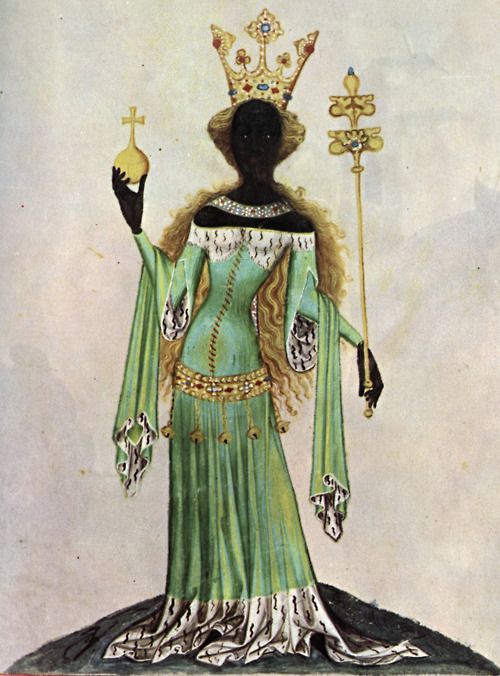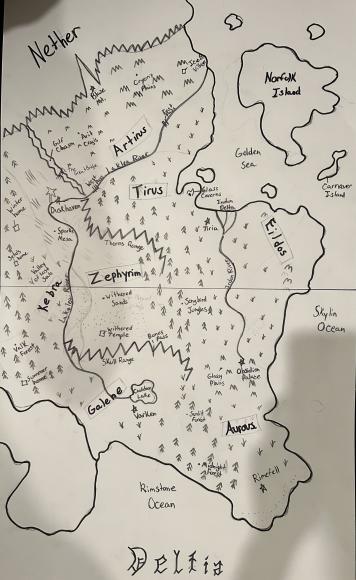#Kebra
Explore tagged Tumblr posts
Text

KEBRA photographed by Tatsumi for Tótem Magazine
2K notes
·
View notes
Text

Jano, Kebra, Mon Teppaz est naze.
19 notes
·
View notes
Text
youtube
1 note
·
View note
Text

Kebra-Seyoun Charles performing Andres Martin's Bass Concerto No. 2 November 4, 2023.
#black men#Kebra-Seyoun Charles#Andres Martin#classical music#bass#black classical music#black gay pride
130 notes
·
View notes
Text

Kandake, kadake or kentake (Meroitic: 𐦲𐦷𐦲𐦡 kdke), often Latinised as Candace (Ancient Greek: Κανδάκη, Kandakē), was the Meroitic term for the sister of the king of Kush who, due to the matrilineal succession, would bear the next heir, making her a queen mother.

Pliny writes that the "Queen of the Ethiopians" bore the title Candace, and indicates that the Ethiopians had conquered ancient Syria and the Mediterranean.
In 25 BC the Kush kandake Amanirenas, as reported by Strabo, attacked the city of Syene, today's Aswan, in territory of the Roman Empire; Emperor Augustus destroyed the city of Napata in retaliation.
Cassius Dio wrote that Kandake's army advanced as far as the Elephantine in Egypt, but Petronius defeated them and took Napata, their capital, and other cities.
Four African queens were known to the Greco-Roman world as the "Candaces": Amanishakheto, Amanirenas, Nawidemak, and Malegereabar

Biblical usage
The Baptism of Queen Candace's Eunuch (c. 1625–30, attributed to Hendrick van Balen and Jan Brueghel the Younger)
In the New Testament, a treasury official of "Candace, queen of the Ethiopians", returning from a trip to Jerusalem, met with Philip the Evangelist:
Now an angel of the Lord said to Philip, "Rise and go toward the south to the road that goes down from Jerusalem to Gaza." This is a desert place. And he rose and went. And there was an Ethiopian, a eunuch, a court official of Candace, queen of the Ethiopians, who was in charge of all her treasure. He had come to Jerusalem to worship
He discussed with Philip the meaning of a perplexing passage from the Book of Isaiah. Philip explained the scripture to him and he was promptly baptised in some nearby water. The eunuch 'went on his way, rejoicing', and presumably therefore reported back on his conversion to the Kandake

Evidence outside of Nubia that shows additional links to Kushite's queenship concept are found in Ethiopia. Ethiopia has a long dynastic history claimed to be over three millennia from before 1000 BC to 1973, the year of the overthrow of the last Menelik emperor, Haile Selassie. The Ethiopian monarchy's official chronicle of dynastic succession descends from Menelik I includes six regnant queens referred to as Kandake. The following queens from the king list have "Kandake" added to their name:
Nicauta Kandake (r. 740–730 BCE)
Nikawla Kandake II (r. 342–332 BCE)
Akawsis Kandake III (r. 325–315 BCE)
Nikosis Kandake IV (r. 242–232 BCE)
Nicotnis Kandake V (r. 35–25 BCE)
Garsemot Kandake VI (r. 40–50 CE) – Allegedly the queen who ruled at the time of the Biblical story of the Ethiopian eunuch.
Twenty-one queens are recorded as sole regent in the kingdom of Ethiopia until the 9th century CE. The conquest of Meroe by the Axumite King Ezana may well provide the historical fiction for the Ethiopian dynastic claim to the Nubian Kandakes and their kings, as it was from this point onwards that the Axumites began calling themselves "Ethiopians", a Greco-Roman term previously used largely for the ancient Nubians. For example, Makeda, Queen of Sheba, in the Kebra Nagast, is also recognized as Candace or "Queen Mother".

Alexandrian legend
Jewellery of Kandake Amanishakheto, from her tomb
A legend in the Alexander romance claims that "Candace of Meroë" fought Alexander the Great. In fact, Alexander never attacked Nubia and never attempted to move further south than the oasis of Siwa in Egypt. The story is that when Alexander attempted to conquer her lands in 332 BC, she arranged her armies strategically to meet him and was present on a war elephant when he approached. Having assessed the strength of her armies, Alexander decided to withdraw from Nubia, heading to Egypt instead. Another story claims that Alexander and Candace had a romantic encounter.
These accounts originate from Alexander Romance by an unknown writer called Pseudo-Callisthenes, and the work is largely a fictionalized and grandiose account of Alexander's life. It is commonly quoted, but there seems to be no historical reference to this event from Alexander's time. The whole story of Alexander and Candace's encounter appears to be legendary.
John Malalas has mixed the Pseudo-Callisthenes material with other and wrote about the affair of Alexander with Kandake, adding that they got married. Malalas also wrote that Kandake was an Indian queen and Alexander met her during his Indian campaign

List of ruling kandakes
Pyramid of Amanitore in modern day Sudan
See also: List of monarchs of Kush
At least eleven kandakes also ruled in their own right as monarchs (i.e. queen regnants) of Kush:
Nahirqo (middle 2nd century BC)
An unknown queen regnant (end of the 2nd–first half of the 1st century BC)
Amanirenas (end of the 1st century BC–beginning of the 1st century AD)
Amanishakheto (early 1st century AD)
Shanakdakhete (first half of the 1st century AD)
Nawidemak (first half of the 1st century AD?)
Amanitore (middle 1st century AD)
Amanikhatashan (middle 2nd century AD?)
Amanikhalika (second half of the 2nd century AD)
Patrapeamani [de] (early 4th century)
Amanipilade (mid-4th century)
Based on the reading of a single inscription, some lists give two later kandakes named Maloqorebar (266–283 AD) and Lahideamani (306-314 AD). A recently discovered inscription corrects this earlier reading, however, showing that neither was a woman.

Archaeological sources
The Kandakes of Meroe were first described through the Greek geographer's Strabo account of the "one-eyed Candace" in 23 BCE in his encyclopedia Geographica. There are at least ten regnant Meroitic queens during the 500 years between 260 BCE and 320 CE, and at least six during the 140 periods between 60 BC and 80 AD. The iconographic portrayal of the Meroitic queens depicts them as women often alone and at the forefront of their stelae and sculptures and shown in regal women's clothing. Early depictions of Kushite queens typically do not have Egyptian elements making their appearance drastically different from their Kushite men and Egyptian counterparts. As seen in the Dream Stela of Tanawetamani, a large shawl was wrapped around the body with an additionally decorated cloak worn over the first; typically, a small tab-like element hanging below the hem touches the ground and has been interpreted as a little tail. The first association with this element of dress is with Tarharqo's mother during his coronation ceremony.
It was not until George Reisner excavated the royal cemeteries at El Kurru and Nuri that archaeological material became available to study the Kushite queenship. Additionally, a few royal tombs of Kushite women have been found at Meroe's cemetery and in Egypt at Abydos (Leahy 1994). At El Kurru, six pyramids belong to royal women of the 25th Dynasty and a pyramid for queen Qalhata of the Napatan period. At Nuri, the tombs of royal women are located on the west plateau with more inscriptional information available at the site, linking the roles that the kings' mothers played in succession and their importance during the Kushite dynasty.
The most important event that Kushite women participated in was kingship's ensured continuity, where royal women were mentioned and represented in the royal ceremony. The lunettes of the stelae of Tanawetamani, Harsiyotef, and Nastasen all provide iconographic and textual evidence of these kings' enthronement. In all of these stelae, the king is accompanied by a female member of his family, mother, and wife. The king's mother played an essential role in the legitimacy of her son as the king; textual evidence from Taharqo's coronation stelae represents inscriptional evidence suggesting that the king's mother traveled to her son's coronation. During the Kushite 25th Dynasty, the office that is known as God's Wife of Amun was established. The royal women in this role acted as the primary contact with the Kushite god Amun. They played a decisive role in the king's accession to the throne.
Bas-reliefs dated to about 170 B.C. reveal the kentake Shanakdakheto, dressed in armor and wielding a spear in battle. She did not rule as queen regent or queen mother, but as a fully independent ruler. Her husband was her consort. In bas-reliefs found in the ruins of building projects she commissioned, Shanakdakheto is portrayed both alone as well as with her husband and son, who would inherit the throne by her death.

#african#afrakan#kemetic dreams#africans#brownskin#brown skin#afrakans#african culture#afrakan spirituality#ta seti#north africa#kandake#candace#kemet#nile valley#hapi valley#hapi#east africa#north east africa#Napata#african history#africantumblr#Shanakdakheto#Kushite 25th Dynasty#haile selassie#amun#amun ra#amunet#Kebra Nagast#meroe
30 notes
·
View notes
Text

2 notes
·
View notes
Text



#building#website content#power#wisdom#knowledge#Solomon#king solomon#king david#queen of sheba#Kebra Nagast
3 notes
·
View notes
Text
Telmo Kebra Ft. Serafina Mercedes – Me Acaba (Prod. Mauro Dix Dj)
Telmo Kebra Ft. Serafina Mercedes – Me Acaba (Prod. Mauro Dix Dj) Já está disponível no Nilson News, a música nova de Telmo Kebra Ft. Serafina Mercedes – Me Acaba (Prod. Mauro Dix Dj) Baixar musica grátis Telmo Kebra Ft. Serafina Mercedes – Me Acaba (Prod. Mauro Dix Dj), Download Mp3 Telmo Kebra Ft. Serafina Mercedes – Me Acaba (Prod. Mauro Dix Dj), Baixar free Telmo Kebra Ft. Serafina Mercedes…

View On WordPress
0 notes
Text

Link to pdf :
youtube

The Queen of Sheba by Konrad Kyeser, c. 1405
1K notes
·
View notes
Text
"Waiting For The Break of Dawn" by Isa Nielsen, Madre Goth, and Kebras
"Waiting For The Break of Dawn" by Isa Nielsen, Madre Goth, and Kebras. #isanielsen
Isa Nielsen, renowned for her stage performances with Steve Vai and Detonator, teams up with Madre Goth and Kebras to release the new single “Waiting For The Break of Dawn“. Released under DMG (EU), this collaboration showcases Isa’s powerful vocals, Madre Goth’s songwriting, and Kebras’s exceptional guitar and production skills. Isa Nielsen, known as the “Musa do Metal” from her time with…

View On WordPress
0 notes
Text
Opus 961, Violist Noemi Chemali’s Auspicious Debut: New Music Activism From Emerging Lebanese Composers
There are many ways to debut on the world stage and there are many ways to represent political activism. Violist Noemi Chemali has chosen, as her important first impression in her recorded debut, a selection of music from young composers whose heritage includes political oppression. The albums profits are promised to MSF, also known as Doctors Without Borders. These works are not directly…

View On WordPress
#Arabic Music#Cadenza#Carolyn Shaw#Cello#Classical Music#Composers#contemporary music#Deanna Cirielli#diaspora#flute#harp#Kebra-Seyoun Charles#Krzystof Penderecki#Lauren Scanio#Layale Chaker#Lebanon#Maqam#Mary Kouyoumdjian#Modern Music#Moraba#New Music#Noemi Chemali#Raffi Boden#Saad Haddad#Sami Seif#Shaleah Feinstein#violin#Wajdi Abou Diab#Yann Chemali
0 notes
Video
youtube
Kebra Ethiopia Sound System | Boiler Room Johannesburg
1 note
·
View note
Text
Books in my Kindle
making this to destress before I start studying
Brief History of Time
Briefer History of Time
Legends of the Gods
Syria and Egypt in the Amarna Letters
Amarna Sunset
Moses and Monotheism
Moses the Egyptian
The Price of Monotheism
Of God and gods
The Samaritan Chronicle
The Kingdom of Kush
Aesop's Fables
Cyropedia
Classical Indian Philosophy
The Jatakas
Kama Sutra
Arthashastra
Classical Philosophy
Philosophy in the Hellenistic and Roman World
The Lost Books of Eden
The Book of Giants
The Diatessaron of Tatian
Odes of Solomon
32 Throne Tales of Vikramaditya
Complete Apocrypha of the Ethiopian Bible
The Book of the Cave of Treasures
Quran
The Quran in its Historical Context
Maghazi of Mamar
A Book of Conquest
The Arabic Hermes
Vivekachudamani
The Seduction of Shiva
Philosophy in the Islamic World
Barlaam and Josaphat
The Saga of Erik the Red
Kebra Nagast
The Trial of Joan of Arc
100 poems of Kabir
The Four Voyages of Columbus
Napoleon's Letters to Josephine
Napoleon's Military Maxims
Vizier of the Two Horned Alexander
And then there were none
Quotations from Chairman Mao
Eye
The Thorn and The Carnation
The Making of a Salafi Woman
The Last Island
#books and reading#books#kindle#book blog#reading#bookblr#bible#bible study#islam#muslimblr#christianblr#jewblr#history#ancient history#religion#god#napoleon#palestine#yahya sinwar#salafism#philosophy#india#ancient greece#ancient egypt#maoism#mao zedong#socialism
11 notes
·
View notes
Text

Older than Egypt is Ethiopia!
Ethiopia is old, even older than Egypt, but its
antiquity is somewhat different. While Egypt was the world's first indisputable nation-state, unique in its complex politico-religious system augmented by magnificent material remains and a corpus of epic literature, in Ethiopia, the very cradle of mankind, the material evidence of its ancient civilisation alone attests to its former glory.
The Ancient Egyptians, from the earliest times, kept records of their kings and this chronology is central to the chronological structure of the early Aegean, Levantine and Mesopotamian civilisations. It is, however, of no import to Ancient Ethiopia. If the
Ethiopians did keep records, these have either been lost for ever or not yet discovered. The attempts by unnamed writers to compile an Ethiopian king-list -- the Kebra Negast or Book of the Glory of Kings -- from
the Queen of Sheba to the rise of the Zagwe dynasty, is believed to be a 13th-century creation; its aim seems to have been to establish the political credentials of the so-called Solomonic dynasty, an Ethiopian king-list that traces the rulers of Ancient Axum to Menelik I (originally Bin Ha Malik, The King's
Son), the son of the "Israelite" King Solomon and the "Ethiopian" Queen Makeda, the Queen of Sheba.
Confusingly, the Queen of Sheba features prominently in the oral and written traditions of Ethiopia, Yemen and ancient Israel. The Yemenis saw her as a South Arabian queen, the Ethiopians as Axumite. In Arabic her name is Bilquis, in Ethiopia Makeda and in the biblical language of the Israelites she is known as
the Queen of Sheba. To add to the confusion,
historians suggest that King Solomon must have reigned around the 10th century BC. It is difficult to decipher fact from fiction, but archaeological evidence is indisputable and it reveals that Axum was founded a millennium later.
LUCY-DINKENESH: Ethiopia easily claims the longest archaeological record of any country
8 notes
·
View notes
Video
youtube
Kebra Ethiopia Sound System | Boiler Room Johannesburg: Kebra Ethiopia S...
<3
7 notes
·
View notes
Photo

@littlewolf651
Welcome to the Kingdom of Deltia.
A Minecraft RP me and Little have done for the past 2ish years? (Maybe more? 3??). That was based on Deltora Quest (A book series Little read). We used a combination of ideas form both, along with MCYT people... and it sort of just became it’s own thing. By this point it’s far from what it originally started as lol.
((Please ignore any spelling errors, I made D’s in English))
So, this kingdom it is split into 7 regions, 7 tribes, all together that make up the Kingdom itself. Each Region has it’s own people, races, and culture. As well as a Gem that makes up the values of the people.
Stars represent capitals. Dots represent places of interest. Squares are important areas and/or homes.
Auorus: Capital - Rimfell (The Captial of the Kingdom itself and home to the castle) Gem ~ Topaz Galene: Capital - Varken (Near the Caldron Lake) Gem ~ Ruby Eildos: Capital - Obsidian Palace Gem ~ Opal Zephyrim: Capital - Duskhaven Gem ~ Lapis Tirus: Capital - Tiria Gem ~ Amythest Kebra: (Does not have a capital as the tribe is migration, has a Summer Home and Winter Home) Gem ~ Diamond Artirus: Capital - Blaze Mountain (Also has the Ice B. Village. Of where the Ice Bajins live, but consider Blaze Mountain to be the Capital) Gem ~ Emerald
If you guys want I can make a separate part on our lore and races and culture for each region. :D
8 notes
·
View notes